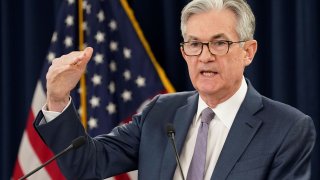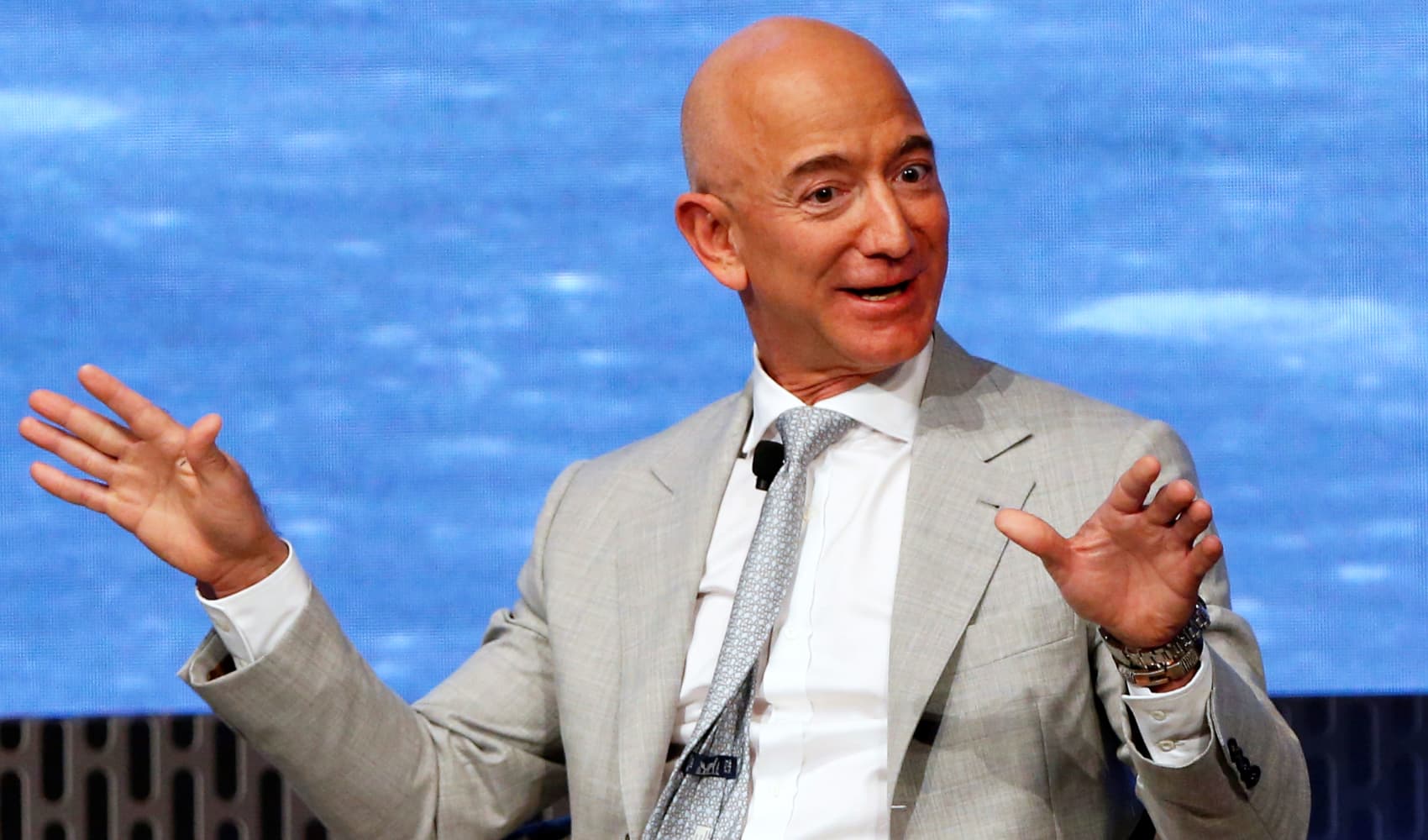
- The Federal Reserve concludes its two-day policy meeting Wednesday, with expectations for no change in interest rates.
- However, Bank of America said the meeting will be "one of the most critical events for the Fed in some time."
- Chairman Jerome Powell and his fellow policymakers will have to convince investors that the current policy is correct and won’t change in response to a brighter economic outlook and major progress in the Covid-19 fight.
A resurgent economy, percolating inflation and a stock market ripping higher don't seem to make much of a recipe for easy monetary policy.
But that's the position in which the Federal Reserve finds itself.
The challenge for the central bank this week will be to explain that position to investors and assure them that even if the status quo remains, that won't provoke policymakers to change course, nor should they.
Get Philly local news, weather forecasts, sports and entertainment stories to your inbox. Sign up for NBC Philadelphia newsletters.
"The basic line is, 'Everything looks a little better, but there's still a lot of uncertainty and we're not going to do anything soon.' I'm sure we'll hear that," said Bill English, former head of the Fed's Division of Monetary Affairs and now a finance professor at the Yale School of Management.
"They do want to suggest that things are better," he said. "On the other hand, they don't want to suggest that they're going to change policy anytime soon. So it's a tricky communication."
The Federal Open Market Committee, which sets monetary policy, meets Tuesday and Wednesday, followed by a news conference from Fed Chairman Jerome Powell.
Money Report
No one is expecting broad-stroke changes. Short-term borrowing rates will remain near zero, and the Fed will continue buying at least $120 billion a month in bonds to keep markets flowing and financial conditions loose.
There will be much for investors to chew on from this meeting.
Economic projections due

For one, individual members will update their forecasts for gross domestic product, unemployment and inflation.
They last submitted estimates in December, before Congress approved two stimulus packages totaling nearly $3 trillion and before a Covid-19 vaccine rollout that is seeing 2.4 million Americans inoculated every day.
Goldman Sachs recently raised its GDP forecast to 7% for the full year and also sees unemployment falling more rapidly than expected while inflationary pressures heat up.
By contrast, the Fed's Summary of Economic Projections in December indicated a median estimate of just 4.2% for GDP, along with an unemployment rate projection of 5% and core inflation running around 1.8%.
Those numbers are likely to see "material upward revisions," according to Bank of America.
The GDP figure could be raised by "at least" 1.5 percentage points to a range of 5.7% to 6%, while unemployment could be taken down to 4.8% and inflation raised to the Fed's 2% target, Bank of America estimated.
Inflation already has become a headache for the Fed, with rising bond yields and market pricing rising, by one measure, to the highest level in nearly 13 years.
The bank's economic team in a note called this week's meeting "one of the most critical events for the Fed in some time."
Powell "will have to strike the right balance" between an optimistic economic outlook and the Fed's willingness to allow inflation to run hotter than usual in an effort to make sure that employment gains are broad and inclusive of income, race and gender, Bank of America noted.
Powell could use the occasion to tee up some gradual policy adjustments ahead.
"This will likely be the Fed's first step in the less accommodative direction as they move to set the stage for a taper & eventual policy tightening," the bank's note said.
Hawkish tilt possible

In recent weeks, markets had been speculating that the Fed would adjust its bond purchases to bring down longer-term rates that have jumped to pre-pandemic levels this year and caused volatility in the stock market.
Powell has pushed back on that notion.
Investors, through the Fed's dot plot of individual members' expectations, will get a look as to how broad the consensus is for an indefinitely unchanged approach.
"Ostensibly, everyone is on board with the new framework, but it might not mean the same to everyone," said Tom Graff, head of fixed income at Brown Advisory. "That might not mean [some members] are hawkish as much as they just view this average inflation targeting regime will work differently than maybe Powell does."
The market, then, could be left to decipher which policy "dots" are moving toward rate hikes. The market already is pricing in the possibility of increases in late-2022 and three total by the end of 2023, according to Citigroup. Current Fed estimates are for no moves until at least 2024.
"It's going to be interesting, because how do you upgrade your GDP forecasts to 7% and your inflation target to 2% and your forecast for unemployment to 5% and then say we're going to be super easy," said Kathy Jones, chief fixed income strategist at Charles Schwab. "What they'll try to emphasize is patience."
Jones said she doesn't expect a shift in policy yet, with Powell emphasizing the importance of "as broad and inclusive increase in employment and decrease in unemployment as possible before they even consider raising rates."
"They're pretty comfortable waiting it out," she said.
English, the former Fed official and Yale professor, said Powell will emphasize "uncertainty" despite the progress with the virus and the economy.
"Part of the communication will be 'our reaction function hasn't changed. We still want to achieve our objectives, we're still going to be patient,'" he said. "The most likely outlook is better, but the world is an uncertain place. A lot can happen."






